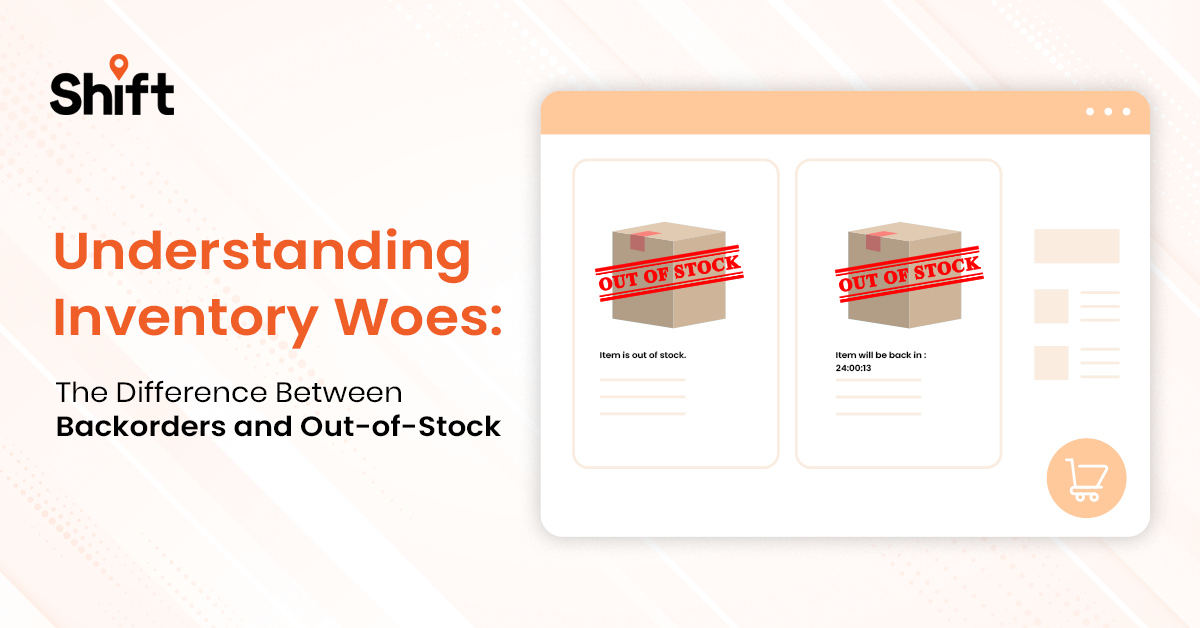Understanding Inventory Woes: The Difference Between Backorders and Out-of-Stock

Inventory management is the process of managing the flow of goods and materials from the manufacturer to the end customer. This entire process involves tracking inventory levels, orders, sales, and deliveries to ensure that the right products are available at the right time to meet the customers’ demands.
Effective inventory management requires a balance between having enough inventory to meet customers’ demands without overstocking or tying up too much capital. Inventory management is a pivotal part of any business that involves buying or selling physical goods, including businesses that offer Order Fulfillment Services. It plays a critical role in determining the overall success or failure of a company.
The Importance of Understanding Inventory Woes for Businesses
A business that deals with physical goods needs to understand inventory woes. If a business faces any kind of inventory issues, it might result in lost sales, unhappy customers, and ultimately a negative impact on the company’s bottom line.
As a result, it is essential to differentiate between backorders and out-of-stock situations to implement effective inventory management strategies.
By effectively understanding the difference between the two, businesses can actually manage their inventory effectively, minimize lost sales, and even improve customer satisfaction.
What is Out-of-Stock?
An out-of-stock situation arises when a product is temporarily unavailable for purchase or delivery due to insufficient inventory. In simple terms, it means that the product is physically not available in the warehouse or store, and the customers cannot buy it until it is restocked.
Causes of Out-of-Stock
There is a list of reasons for a product going out-of-stock in a warehouse or a physical store. Some of them are listed below:
1. Incorrect Demand Forecasting
One of the main causes of out-of-stock situations is inaccurate demand forecasting. Such circumstances arise when a business fails to predict the exact demand for a product. As a result, businesses might fail to fulfill the demands of their customers.
2. Manufacturing or Production Issues
Another reason why out-of-stock situations arise in a warehouse or physical store is due to a manufacturing or production fault, such as equipment failure, shortage of raw materials, and quality control issues that might disrupt the production process and even cause inventory shortages.
3. An Unexpected Spike in Demand for a Product
Well, there might be some situations in which there would be an unexpected spike in the demand for a particular product. In such a case, the demand for the product can quickly deplete the inventory levels, which would further lead to an out-of-stock situation.
What is a Backorder?
A backorder is an order for a product that is currently out of stock but is ordered by a customer and is expected to be restocked shortly. When a particular product is backordered, the customer is generally informed of its tentative delivery date. The customer may wait until the product arrives back in stock or cancel the order.
Causes of Backorder
Just like out-of-stock situations have certain causes, similarly, backorder situations have some causes as well. A few of them are mentioned below:
1. Disruptions in the Supply Chain Lead to Delays in Delivery
At times, certain issues might arise with the production unit, causing supply chain disruptions. For instance, transportation delays, supplier issues, or some other problem might lead to backorders. Due to this, the inventory might not reach the warehouses or physical stores on time, leading to backorders.
2. Seasonal Fluctuations in the Demand for the Product
Seasonal fluctuations, such as any event or holiday, can lead to an increase in the demand for a product, leading to backorders if the inventory is not leveled up or adjusted accordingly. The shift makes efforts to analyze any upcoming seasonal fluctuations in the form of an event or an occasion and manage the orders to fulfill the demands of their customers accordingly.
3. Strategies to Deal with Backorders and Stockouts
Situations of backorders and stockouts can be a challenge for businesses to manage as it results in dissatisfied customers, lost sales, and decreased revenue. However, there are some strategies that many businesses, including Shift, follow to mitigate the impact of such situations.
One such strategy followed by Shift is to use a backorder management system, which helps track inventory levels in real time and generates purchase orders automatically to replenish the stock when it reaches a certain threshold.
Conclusion
Inventory management is essential for any business to maintain customer satisfaction and profitability, especially for those offering Order Fulfillment Services. Many businesses fail to differentiate between out-of-stock situations and backorder situations. Due to this, they even fail to implement the appropriate tactics to manage such circumstances. Proper strategies to manage backorders and out-of-stock situations, which even Shift follows, are shared above. It’s the business’ responsibility to ensure that all of these strategies are followed properly to attain customer satisfaction levels and keep up business operations.